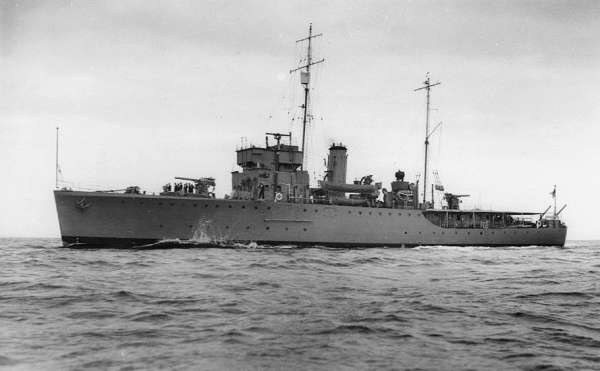| WW2 Memorial Profiles - West Mersea
EDWARD JAMES TAYLOR
Leading Seaman C/SSX 29110
Royal Navy
HMS NIGER
Died 6 July 1942 age 22
Commemorated West Mersea War Memorial, Chatham Naval Memorial
Edward Taylor was born c1920, son of Edward and Amelia Betty Taylor. Husband of Pearl Taylor of Grimsby. In 1939 Amelia was living at 9 Council Houses, Barfield Road, moving to Ashleigh in Churchfields after the War. Edward had a sister Peggy.

H.M.S. NIGER J73 - Halcyon Class Minesweeper built 1936
Edward Taylor was killed when HMS NIGER was sunk in July 1942. He was an Acting Petty Officer on board the minesweeper, which was part of the escort of convoy QP13 returning from the Russian Arctic port of Arkhangelsk to Iceland, North America and the UK. Each of the escort vessels was carrying survivors from previous losses as well as its own crew. On 4th of July HMS NIGER was leading a detachment of vessels bound for Reykjavik and was to the north of Iceland. Most of the Denmark Strait had bee blocked by a minefield laid by the British a month earlier, to trap German raiders, leaving a narrow channel to the south.
Visibility was poor and she went ahead to try and establish their position. A gap in the mist cleared and what was thought to be a steep cliff was sighted ahead. The NIGER and the merchant ships astern were ordered to alter cause to the west. The mist cleared further, and the steep cliff proved to be an iceberg, but the NIGER and merchant ships were by now entering the minefield and a change of course back to the southwest was too late.
Within minutes HMS NIGER struck a mine and blew up, sinking very quickly. 80 officers and crew and 39 survivors from the EDINBURGH went down with her. There were only 8 survivors. Seven of the merchant ships following her were mined and only one of them was salvaged. 51 lives were lost from the merchant ships.
Two escorting trawlers did not know of the minefield and assumed the ships had been torpedoed by U-boats. To deter further U-boat attacks, the trawlers dropped depth charges in the area where the ships had sunk and there were survivors in the water. The trawlers and other escort ships eventually rescued 230 people, of whom 47 later died of exposure. Miraculously, none of the rescue ships set off further mines.
Sources
Commonwealth War Graves Commission
Roger Bullen
"Running the Gauntlet: Battles for the Barents Sea", by Frank Pearce, published 1989
|